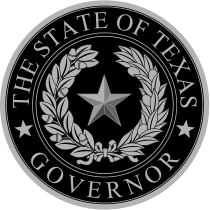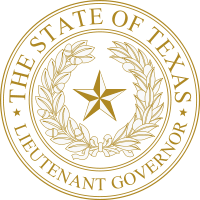Ross S. Sterling
| Ross S. Sterling | |
|---|---|
| 31st Governor of Texas | |
|
In office January 20, 1931 – January 17, 1933 | |
| Lieutenant | Edgar E. Witt |
| Preceded by | Dan Moody |
| Succeeded by | Miriam A. Ferguson |
| Personal details | |
| Born |
Ross Shaw Sterling February 11, 1875 Anahuac, Texas |
| Died |
March 25, 1949 (aged 74) Fort Worth, Texas |
| Resting place |
Glenwood Cemetery Houston, Texas |
| Political party | Democratic |
| Spouse(s) | Maud Abbie Gage Sterling |
Ross Shaw Sterling (February 11, 1875 – March 25, 1949) was an American politician who was the 31st Governor of Texas, serving a single two-year term from January 20, 1931 to January 17, 1933.

Early years
Sterling was born in Anahuac in Chambers County near Houston, Texas. He grew up on a farm and, after little formal education, began working as a clerk at the age of twelve.[2]
Career
At the age of twenty-one, Sterling launched his own merchandising business. In 1911, he, his brother Frank Sterling, and other oilmen, formed the Humble Oil Company, a predecessor of present-day Exxon-Mobil.[2] They were joined in the venture by their sister, Florence M. Sterling.[3] Sterling and his brother Frank and his sister, Florence, were referred to as the "Trio."[4]
In addition to the oil industry, Sterling was also involved in a railroad company, the former Houston Post newspaper, banking, and real estate in the Houston area. He was a member of the Houston Port Commission. He served as chair of the Texas Highway Commission under his predecessor, Governor Dan Moody.[5]
Public service
A Democrat, Sterling defeated former Governor Miriam "Ma" Ferguson and several other candidates in the 1930 primary race for governor. During Sterling's term in office, the East Texas oil fields experienced rapid and uncontrolled development. The Railroad Commission of Texas attempted pro-ration, but the courts struck down the plan. Because of the chaotic situation, Sterling declared martial law in four counties for six months. National Guard troops were sent to the oil fields to limit waste and control production. This action was later declared unwarranted by the federal district court and the U.S. Supreme Court, and the Railroad Commission's plan for proration was accepted. Cotton prices continued to decline during Sterling's term in office.[5]
Sterling's gubernatorial secretary, Jessie Ziegler of Houston, apparently exerted wide latitude in his administration of the office. She was known to have altered mail correspondence in which Sterling became intemperate with demanding constituents so as not to close the door on gaining future support from such irate voters. She was known to advise him on decision making, including the issuance of pardons in the aftermath of scandals in the previous Ferguson administrations. After Sterling's loss in the 1932 Democratic primary to Miriam Ferguson,[2] whom he had defeated in 1930, Ziegler took a similar but lower-paying staff job with a state senator.[5]
Personal life and death
He wed Maud Abbie Gage on October 10, 1898.[2]
Sterling died in Fort Worth on March 25, 1949, and is buried at Glenwood Cemetery in Houston.[6] Maud Sterling died in 1963, and is buried next to him.[7]
Two Texas high schools and a middle school, Sterling High School in Baytown, and Sterling High School in Houston, Ross Sterling Middle School, Humble, Texas, are named for him. In addition, his grand-nephew, Ross N. Sterling, a Republican, became a United States federal judge in Texas under appointment of U.S. President Gerald R. Ford, Jr.[8]
In 1925, Sterling's daughter Mildred married the prominent architect Wyatt C. Hedrick of Fort Worth, Texas. Sterling's former house, built about 1910, was moved in 1999 from 106 Westheimer Road to the intersection of Bagby and Rosalie to undergo restoration.[9]
References
- ↑ "Designs for the 'Sterling Hotel' in Houston". The Grand Old Lady. Retrieved 30 November 2015.
- 1 2 3 4 "Ross Shaw Sterling". Handbook of Texas Online. Texas STate Historical Association. Retrieved 28 February 2012.
- ↑ McArthur, Judith N. (15 June 2010). "Sterling, Florence M.". Handbook of Texas Online. Texas State Historical Association. Retrieved 14 April 2016.
- ↑ "From Anahuac to Millions". Petroleum Age. 7 (10): 61. January 1920. Retrieved 14 April 2016.
- 1 2 3 "Jessie Ziegler and Governor Ross Sterling," East Texas Historical Association and West Texas Historical Association, annual meeting in Fort Worth, Texas, February 26, 2010
- ↑ Ross Shaw Sterling at Find a Grave
- ↑ Maud Sterling at Find a Grave
- ↑ Steven Harmon Wilson, The Rise of Judicial Management in the U.S. District Court, Southern District of Texas (2002), p. 241-242.
- ↑ "A monumental task." Houston Chronicle. April 3, 1999. A25 MetFront. Retrieved on November 15, 2009.
There is also a Ross Sterling Middle School in Texas located in Humble Independent School District.
Further reading
- Sterling, Ross S.; Kilman, Ed (2007). Ross Sterling, Texan: A Memoir by the Founder of Humble Oil and Refining Company. Austin: Univ. of Texas Press. ISBN 0-292-71442-4.
External links
- Ross Shaw Sterling from the Handbook of Texas Online
- http://www.lib.utexas.edu/taro/tslac/40032/tsl-40032.html
| Political offices | ||
|---|---|---|
| Preceded by Dan Moody |
Governor of Texas January 20, 1931 – January 17, 1933 |
Succeeded by Miriam A. Ferguson |

